AMD RDNA 4 Radeon RX 9000-series GPUs revealed: Targeting mainstream price and performance with improved AI and ray tracing
The next generation AMD GPUs will have a new model number structure to match Nvidia’s offerings.
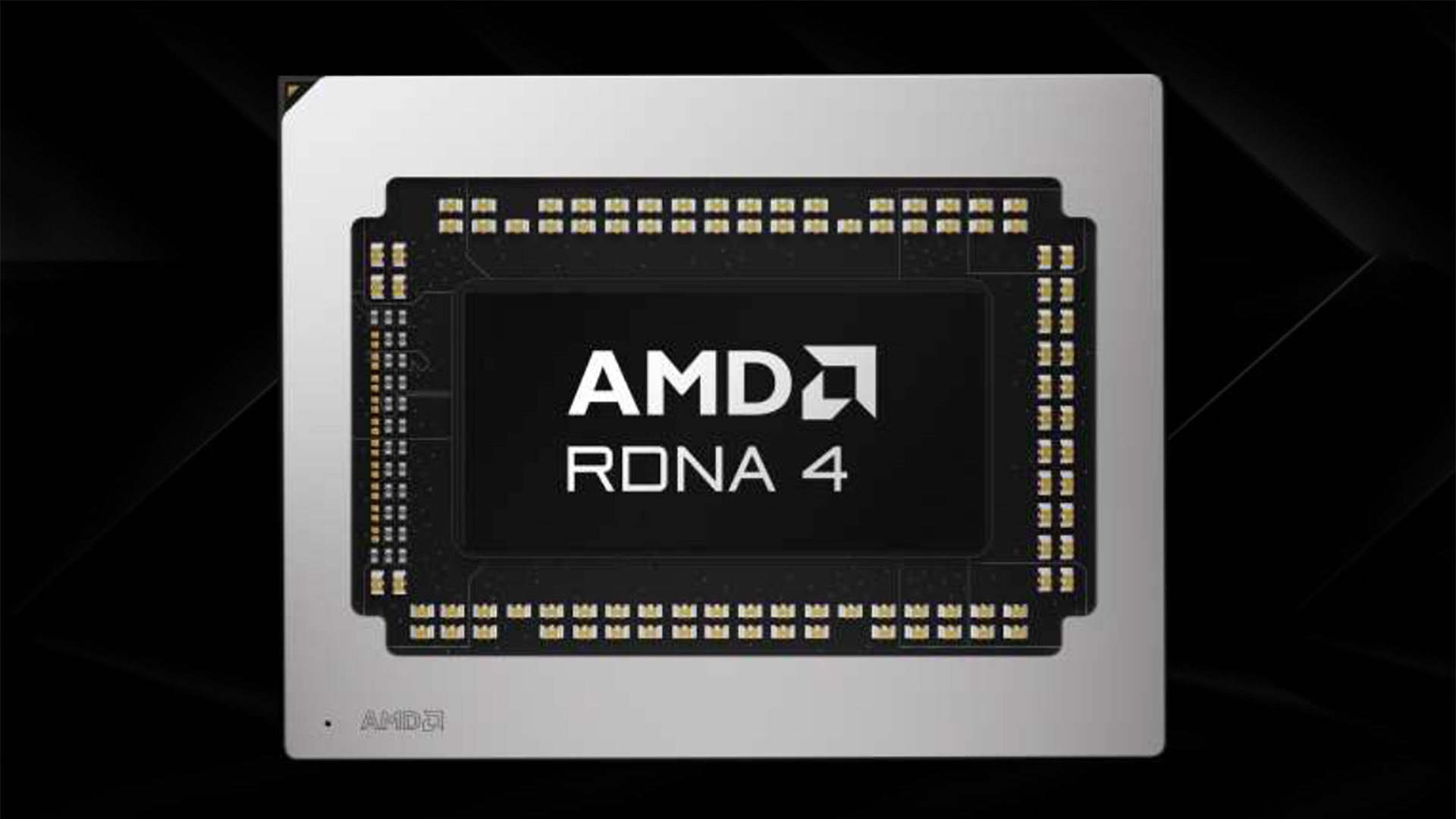
AMD’s RDNA 4 GPUs have seen a few leaks and rumors over the past year, and now AMD has pulled back the curtain a little bit to reveal its next generation Radeon RX 9000-series graphics cards. As expected, AMD will be focusing on the performance-mainstream market, eschewing the extreme end of the performance and pricing ladder — and perhaps skipping the budget segment. Release dates, specifications, and pricing are still under wraps, but at least two of the model names are now official, with two more now effectively confirmed. These will compete with the best graphics cards.
We expect to see early samples of AMD’s upcoming GPUs at CES 2025 this week, but it remains to be seen just how many details will be shared. This is by no means an official launch of the GPUs, and AMD says it’s only “previewing” RDNA 4 at CES 2025. The launch date at present simply says Q1 2025, and that’s for the first two graphics cards in the lineup. We anticipate other models will become available later in the year, perhaps before June but nothing official has been stated at present. Here’s what we know.
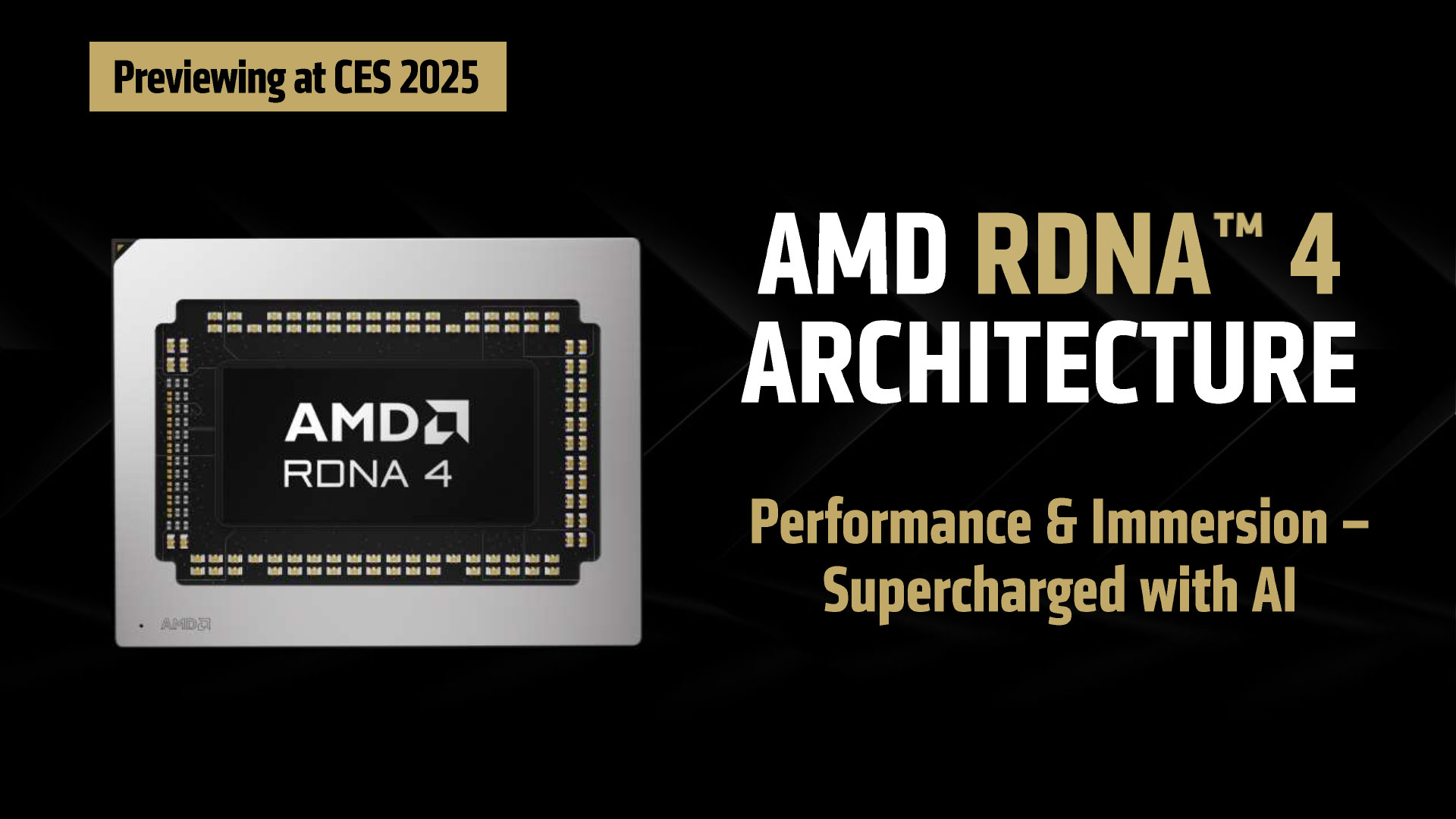
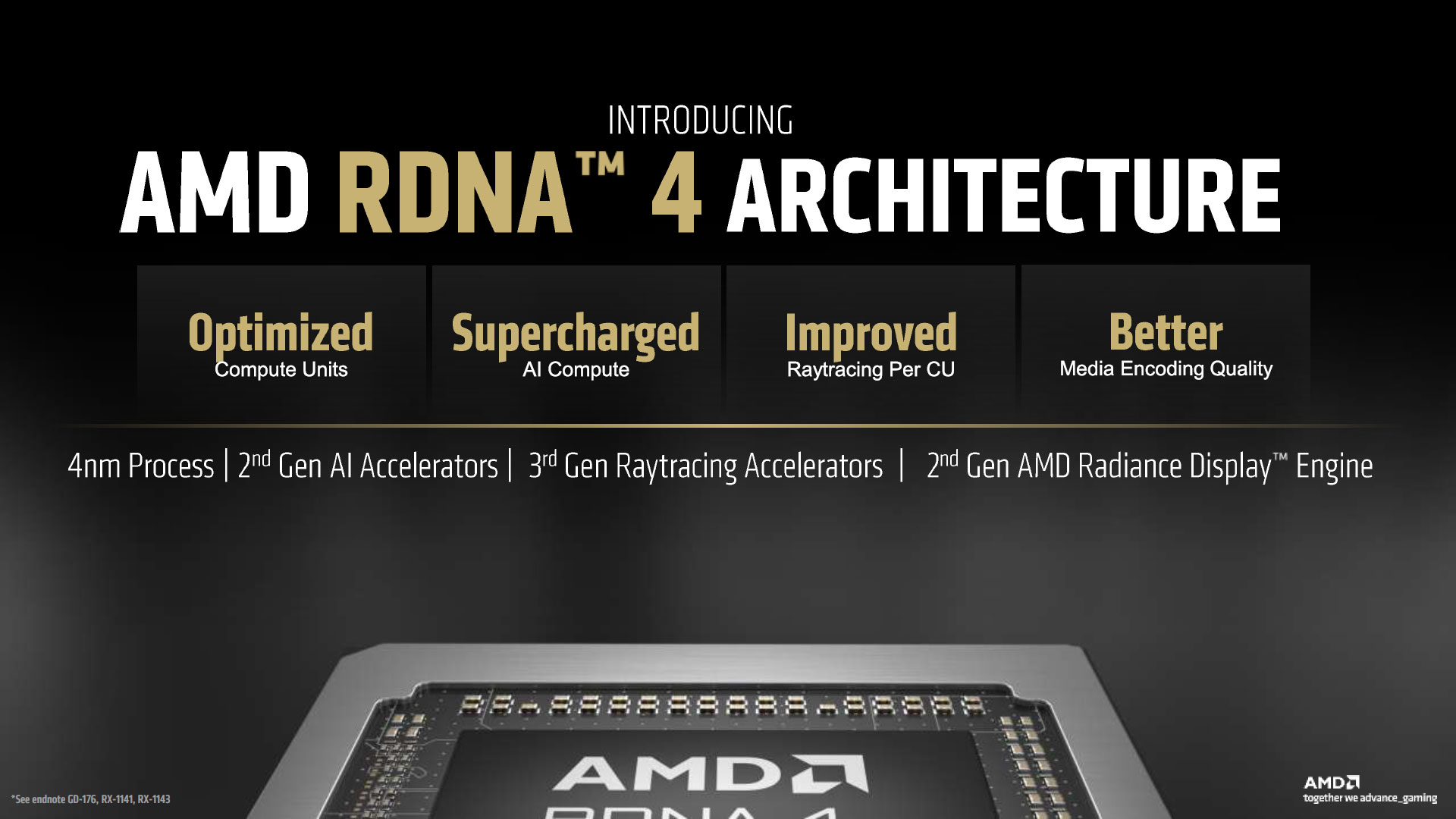
The RDNA 4 architecture name was a given, barring a major change in branding and direction. AMD will move to a 4nm TSMC process node — we don’t know if that’s N4, N4P, or some other variant — which should bring some decent density and efficiency improvements. This will also be the third generation of AMD’s Ray Accelerators, and the second generation of the AI Accelerators and Radiance Display Engine. About the only truly surprising aspect of RDNA 4 is that it took AMD this long to seriously invest in AI cores for its consumer GPUs — the CDNA architectures have had tensor processing units for several years now.
The fundamental changes haven’t been shared, only somewhat nebulous statements. RDNA 4 will have “optimized” compute units (CUs), “supercharged” AI compute, “improved” ray tracing, and “better” media encoding quality. Those are all good things to see in a new GPU architecture, but until we have additional details, and more importantly, until we’ve been able to put everything to the test, these are merely statements and claims.
One interesting question is whether or not AMD will continue to utilize the GPU chiplet approach that it introduced with RDNA 3. There was no discussion of that as yet, and it seems like it could go either way. With RDNA 3, AMD had two larger GPUs, Navi 31 and Navi 32, that used a GCD (Graphics Compute Die) matched with anywhere from three to six MCDs (Memory Cache Dies). The lower tier Navi 33 opted to stick with a monolithic design and an older process node.
RDNA 4 appears to only have two GPUs planned, currently rumored but not confirmed to be called Navi 44 and Navi 48. These should take over for the RX 7600 through RX 7900 XT, based on AMD’s slides, but we don’t have CU counts, memory configurations, or other details at present. We can only hope that AMD will leave the 8GB graphics card era in the past, and if it also uses GDDR7 memory we could even see 3GB chips — meaning 50% more memory capacity for any given interface width, so 12GB on a 128-bit, 18GB on 192-bit, and 24GB on 256-bit. But again, there’s no official information on the memory, cache, or use of chiplets at present.
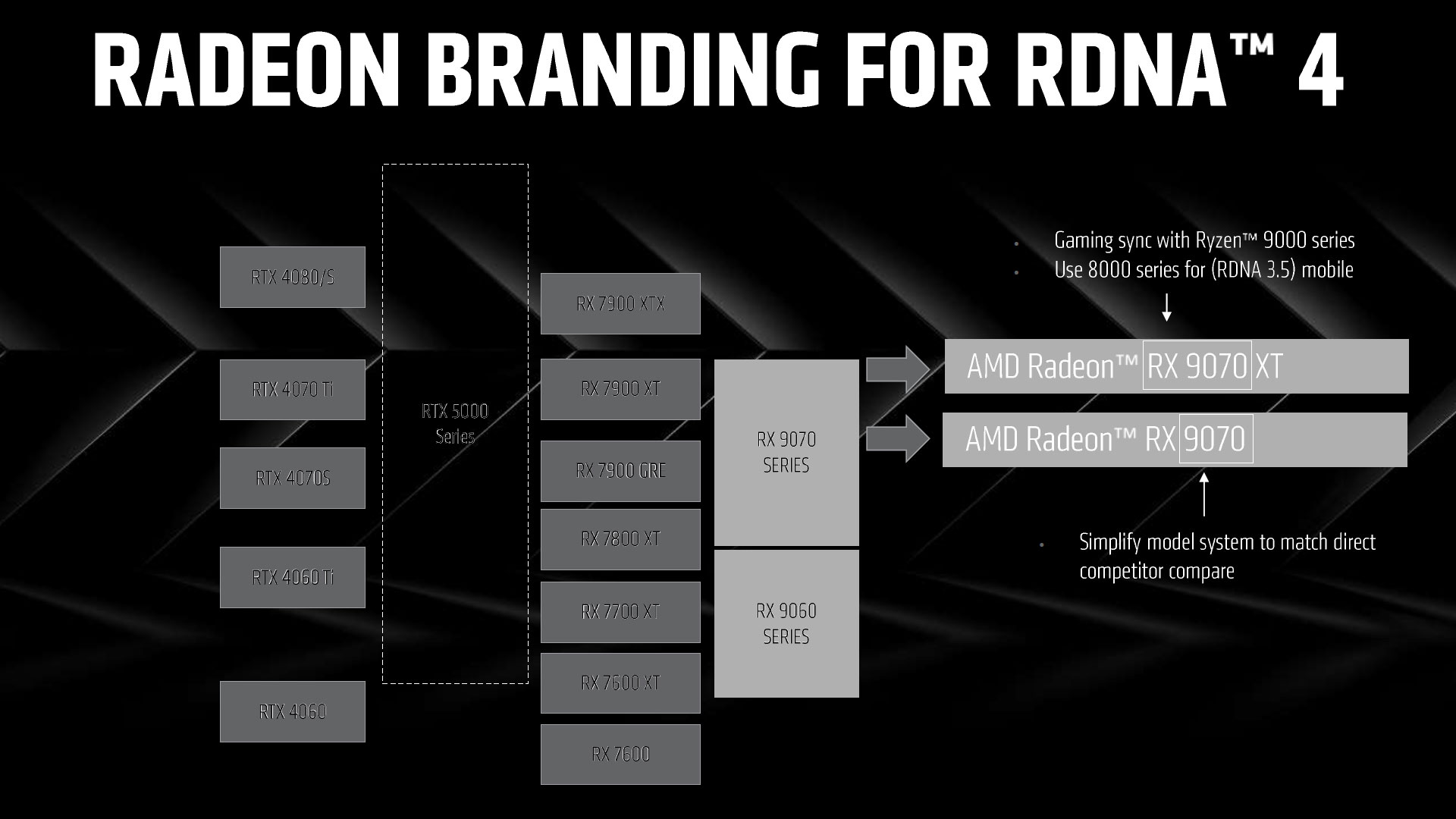
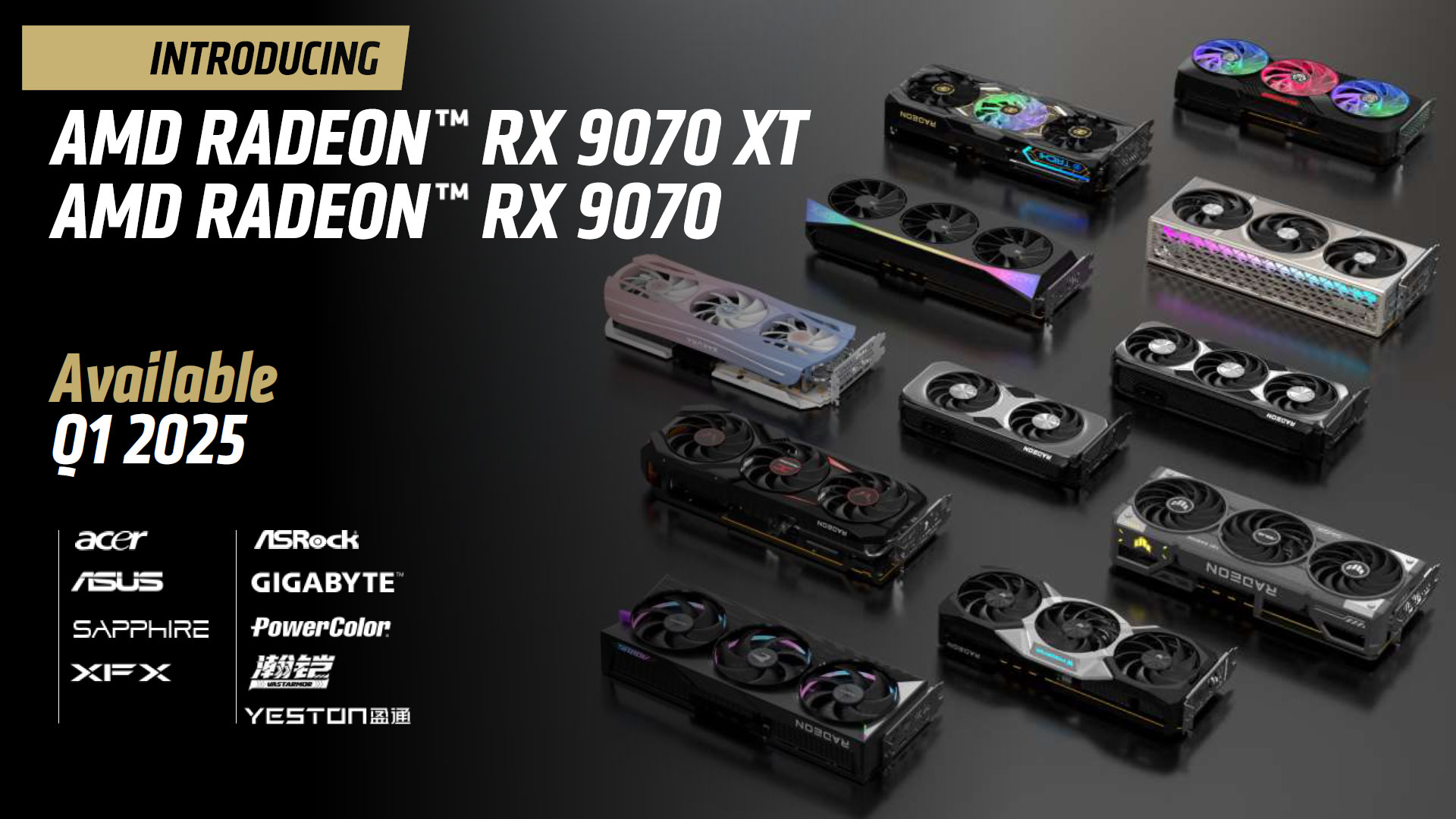
What AMD did officially disclose is the product branding and we would guess four different GPU names. AMD will sort of skip the Radeon 8000-series, leaving that for integrated solutions on mobile devices using the RDNA 3.5 architecture. There won’t be any 8000-series desktop GPUs. Instead, AMD will use Radeon 9000-series branding, aligning its desktop lineup with the 9000-series Ryzen CPUs. It will also shift to using the tens digit to indicate relative performance levels, to match up with Nvidia’s GPU models.
At the top, AMD will have a Radeon RX 9070 XT that should take over from the RX 7900 XT and compete with the RTX 4070 Ti/Ti Super and perhaps the RTX 5070 Ti as well — we’ll need to wait and see official specs to determine where the parts actually match up. Below that will be the vanilla Radeon RX 9070, taking over from the 7900 GRE and 7800 XT and gunning for the RTX 5070 presumably. These are the two confirmed GPUs, with a Q1 2025 release date but no other hard information right now.
AMD also showed the Radeon RX 9060 branding, and presumably we will get at least an RX 9060 XT and an RX 9060. As indicated in the slide, these will take over from the existing RX 7600/7600 XT and the RX 7700 XT. They’ll also compete with Nvidia’s existing RTX 4060 and 4060 Ti cards, and their eventual RTX 5060-class replacements.
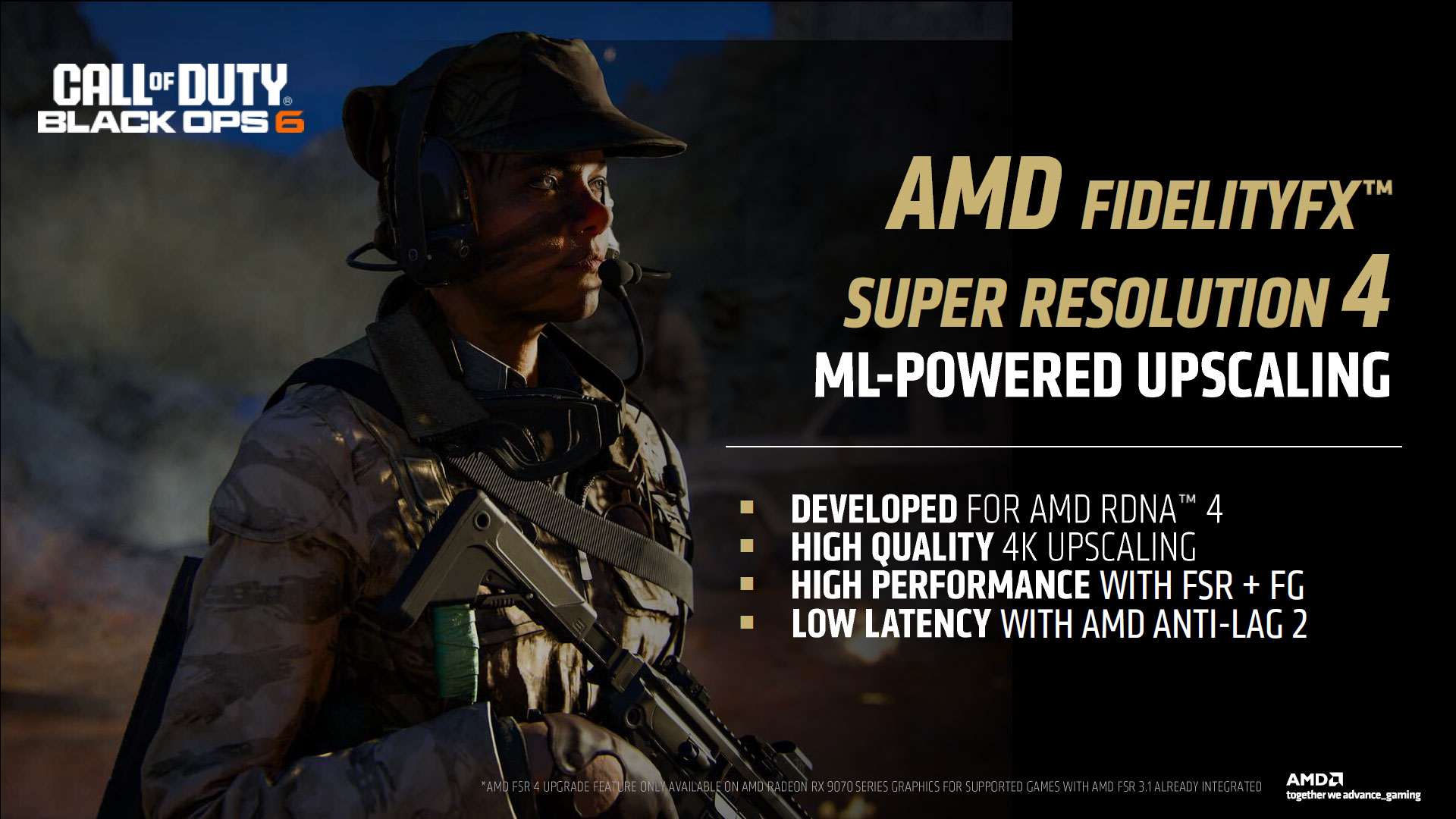
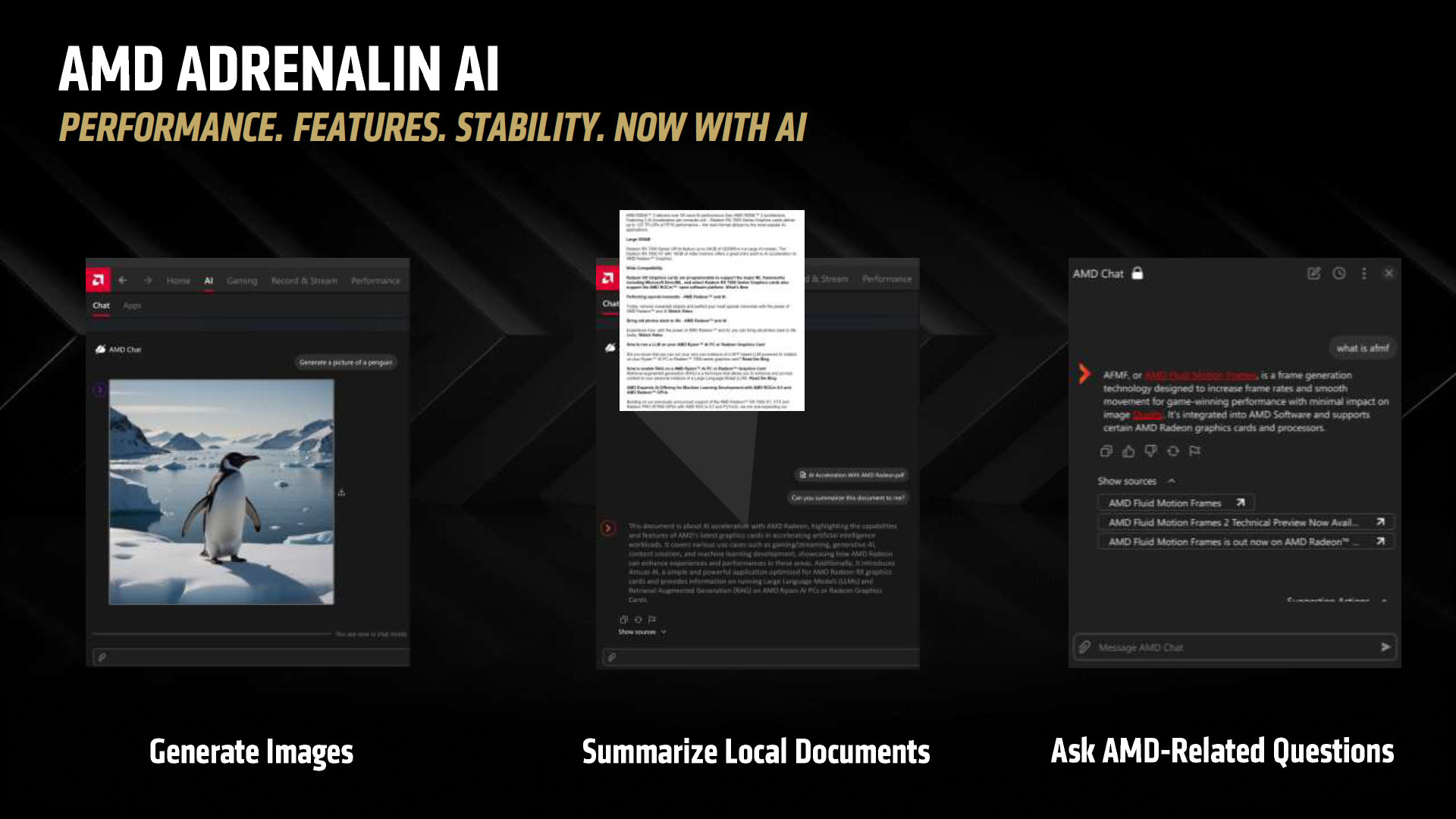
As part of the enhanced AI aspects, AMD also announced its upcoming FSR 4 upscaling technology, which will use the new and improved RDNA 4 AI Accelerators to provide machine-learning-based upscaling. That should make it similar to Nvidia's DLSS and Intel's XeSS, and it appears FSR 4 will be relatively easy to add to existing FSR 3.1 enabled games. Obviously, we'll need the new GPUs before we can test it.
AMD also mentioned some AI-based tools like text summary and image generation will be integrated into its Adrenalin AI suite of software. Whether this will be part of the core GPU drivers package or a separate application isn't entirely clear, but it looks to be similar in principle to some of what Nvidia has done with the Nvidia App.
Who will end up with the best graphics cards when the dust settles? It’s far too early to say, but we’ll be testing the hardware as soon as we’re able. It’s going to be an exciting year for graphics cards by all appearances.
Get Tom's Hardware's best news and in-depth reviews, straight to your inbox.

Jarred Walton is a senior editor at Tom's Hardware focusing on everything GPU. He has been working as a tech journalist since 2004, writing for AnandTech, Maximum PC, and PC Gamer. From the first S3 Virge '3D decelerators' to today's GPUs, Jarred keeps up with all the latest graphics trends and is the one to ask about game performance.
-
TheSecondPower Keeping up with AMD's branding is exhausting. HD 7xxx series then R9 2xx series then RX 5xxx series now RX 90xx series. Now it's also going to be easy to confuse AMD series with Nvidia.Reply -
A Stoner Who will end up with the best graphics cards when the dust settles?Reply
nVidia will end up with the best graphics cards simply because AMD and Intel are not competing at the high end of the market. The question should be more about who is going to offer the best value for the dollar at the 1080P, the 1440P and 4K resolutions. There, there is competition. -
salgado18 Reply“improved” ray tracing
Improved? It should be ground-breaking! Supercharged! Revolutionary! They needed to double or triple it to catch up! Just "improved" means their cards will still look worse than Nvidia? Are they hoping that raytracing just dies off because of the lack of support, like PhysX? I'm very concerned now. -
emike09 Well, that was a lackluster announcement. We already knew AMD cards were coming soon. Any excitement I had to see what their R&D department has been up to was quickly squashed. "Announcing our new cards!! They're faster and better than last time! We hope you buy, thanks for watching!"Reply
Hopefully they can give us some real-world details before CES is over. Maybe they're just waiting for Nvidia to have their announcement before they throw out some numbers and details about what's changed and why we might be interested in their cards. With Path tracing showing off what it can do in several titles, I really want to see more major games move this way. Simple "improved ray tracing" doesn't strike much confidence here. On RDNA3, they also announced improved ray tracing, and it was better, but still lagged behind compared to Nvidia's previous 3000 series equivalents. -
logainofhades Replysalgado18 said:Improved? It should be ground-breaking! Supercharged! Revolutionary! They needed to double or triple it to catch up! Just "improved" means their cards will still look worse than Nvidia? Are they hoping that raytracing just dies off because of the lack of support, like PhysX? I'm very concerned now.
The 7900xtx was able to match the 3090ti in RT. Considering it is also only their second gen of RT capable cards, that is pretty impressive. Not to mention the R&D budget difference between the two.
https://www.techpowerup.com/review/amd-radeon-rx-7900-xtx/34.html -
JarredWaltonGPU Reply
When we say “best” we don’t mean “fastest” — we mean all those other elements like value, efficiency, and features. Without pricing and performance data, we don’t have much to go on.A Stoner said:Who will end up with the best graphics cards when the dust settles?
nVidia will end up with the best graphics cards simply because AMD and Intel are not competing at the high end of the market. The question should be more about who is going to offer the best value for the dollar at the 1080P, the 1440P and 4K resolutions. There, there is competition. -
thestryker Reply
Not really. Intel's first generation RT matched the equivalent 30 series and that architecture is a mess. AMD simply didn't dedicate enough die space to RT and now they likely will. I'd be surprised if AMD didn't match nvidia in RT performance with these RDNA 4 based cards.logainofhades said:Considering it is also only their second gen of RT capable cards, that is pretty impressive. -
artk2219 Reply
Nah, probably 25% better or so, meaning it likely matches the cards its paired up against, namely the RTX 4070 ti - RTX 4080 non super for now, so "improved" is apt. If Nvidia doesn't have a massive increase in ray tracing performance on the mid tier cards this generation, then it should put them roughly on par. This would mean a Radeon 9070 should perform similarly to an RTX 5070, and if they double down on the pricing, then they may have a chance at getting some market share this generation. This means it cant be more than 5 - 600 dollars, preferably closer to 500, we will see how it turns out soon enough though.salgado18 said:Improved? It should be ground-breaking! Supercharged! Revolutionary! They needed to double or triple it to catch up! Just "improved" means their cards will still look worse than Nvidia? Are they hoping that raytracing just dies off because of the lack of support, like PhysX? I'm very concerned now. -
spongiemaster Reply
Which means the competition is only 2 years and 55% faster ahead?logainofhades said:The 7900xtx was able to match the 3090ti in RT. Considering it is also only their second gen of RT capable cards, that is pretty impressive. Not to mention the R&D budget difference between the two.
https://www.techpowerup.com/review/amd-radeon-rx-7900-xtx/34.html
